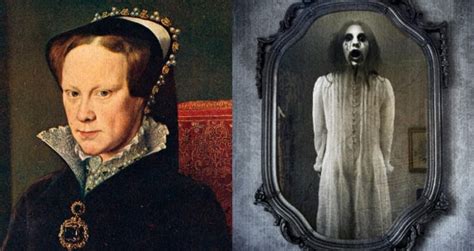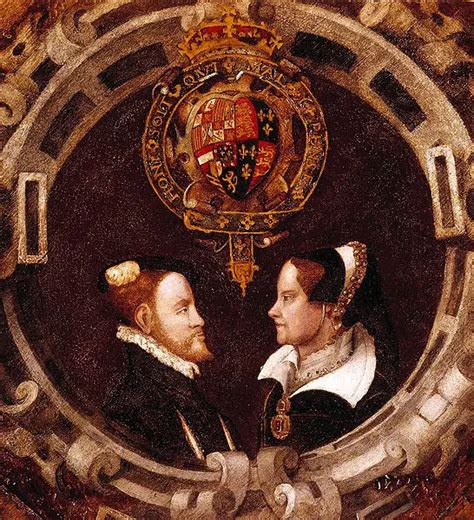mary tudor and philip ii | mary and philip of spain wedding mary tudor and philip ii Learn about the political and personal aspects of the marriage between Mary I of England and Philip II of Spain, who ruled jointly as king and queen of England. Find out how they met, why they married, and how they . SIA "Enters.lv" Tiesiskā forma: Sabiedrība ar ierobežotu atbildību (SIA) Reģistrācijas numurs, datums: 40203059024, 27.03.2017: Reģistrs, Ierakstīts reģistrā: Komercreģistrs, 27.03.2017 : SEPA identifikators: LV53ZZZ40203059024 : Dati no PVN maksātāju reģistra
0 · when did bloody mary die
1 · the tudor society mary i wedding
2 · philip of spain wedding
3 · philip ii of spain wives
4 · mary i philip ii marriage
5 · mary and philip of spain wedding
6 · mary 1 marriage to philip
7 · king philip ii wives
Epicardial left ventricular lead placement for cardiac resynchronization therapy following failed coronary sinus approach. Congest Heart Fail. 2006 Nov-Dec;12 (6):312-6. doi: 10.1111/j.1527-5299.2006.05568.x. Authors. Ravi V Shah 1 , Eldrin F Lewis , Michael M Givertz. Affiliation. 1 Harvard Medical School, Boston, MA, USA. PMID: 17170584.An optimal placement of the left ventricular (LV) lead appears crucial for the intended hemodynamic and hence clinical improvement. A well-localized target area and tools that help to achieve successful lead implantation seem to be of utmost importance to reach an optimal CRT effect.
Learn about the political and personal aspects of the marriage between Mary I of England and Philip II of Spain, who ruled jointly as king and queen of England. Find out how they met, why they married, and how they .Philip's foreign policies were determined by a combination of Catholic fervour and dynastic objectives. He considered himself the chief defender of Catholic Europe, both against the Ottoman Empire and against the forces of the Protestant Reformation. He never relented from his fight against heresy, defending the Catholic faith and limiting freedom of worship within his territories. These territ.Mary I (18 February 1516 – 17 November 1558), also known as Mary Tudor, and as "Bloody Mary" by her Protestant opponents, was Queen of England and Ireland from July 1553 and Queen of Spain and the Habsburg dominions as . She needed a Catholic heir to avoid the reversal of her reforms. To accomplish this goal, she arranged to marry Philip II of Spain.
when did bloody mary die
the tudor society mary i wedding
Philip II. Philip arrived in England in July, 1554. He set out to Winchester and met the queen at 10 pm at night, trying hard to be agreeable to all of the English lords and ladies. Mary was .History, British Studies, European Studies, Latin American Studies. The co-monarchy of Mary I and Philip II put England at the heart of early modern Europe. This positive reassessment of .Her popularity waned further when in 1554 she married Philip, son of the hated Spanish King Charles V, later to become Philip II of Spain. Mary met Protestant opposition .
On 29 October 1553 CE, the queen announced her betrothal to Philip (l. 1527-1598 CE), son of King Charles V of Spain (r. 1516-1556 CE), England's Catholic enemy number one and a state growing ever-richer as it .
He was the forgotten king of the Tudor era. He was the husband of Queen Mary I, otherwise known as Bloody Mary. Here are some facts about King Philip II of Spain. 1. Philip II of Spain was the son of Charles V . Philip II of Spain was the man behind the Spanish Armada. For a man who once contemplated marrying Elizabeth, Philip II of Spain’s . Mary Tudor was the first queen regnant of England, reigning from 1553 until her death in 1558. . she arranged to marry Philip II of Spain. The public response to Mary's marriage was extremely .Mary I (born February 18, 1516, Greenwich, near London, England—died November 17, 1558, London) was the first queen to rule England (1553–58) in her own right. She was known as Bloody Mary for her persecution of Protestants .
gucci bag dupes amazon
philip of spain wedding

cheap gucci bags usa
Philip’s second wife was Mary Tudor (1516–1558), queen of England. The wedding of the young widower to the thirty-eight-year-old monarch, who was said to be old for her age, sickly and bigoted, took place in 1554. . daughter of Emperor Maximilian II and Philip’s sister Maria. The archduchess had originally been intended as a wife for .Mary arrives at Hatfield, Elizabeth's home. Upon her father's new marriage to Anne Boleyn in Season Two, Mary - now in her teens - is seen as a bastard; due to the annulment of her mother's marriage, making way for Elizabeth Tudor to become the future heir. After openly refusing to recognize anyone except Catherine as the Queen in episode 2.03 (her first appearance since . Regarding Mary Tudor’s reign as Queen of England, John Knox defiantly asserted, “unworthy, by reason of her bloody tyranny, of the name of a woman.” . (1553-1558) – otherwise known as Bloody Mary. Anthony Ruggiero explains how Mary’s marriage to King Philip II of Spain and England’s role in the ongoing struggle between France and .Mary Tudor (1516–1558) was the only surviving child of England’s Henry VIII and his first wife, Catherine of Aragon. Mary became queen in 1553 and married Philip, heir to the kingdom of Spain (later Philip II). Although this portrait was painted as an engagement present for her future husband, Mary looks somber.
The co-monarchy of Mary I and Philip II put England at the heart of early modern Europe. This positive reassessment of their joint reign counters a series of pa.
On 25th July 1554, the feast day of St James, Mary I married Philip of Spain, son of Charles V, Holy Roman Emperor. The wedding took place at Winchester Cathedral and the ceremony was performed by Stephen Gardener, Bishop of Winchester and Mary's chancellor. In the appendix of The Chronicle of Queen Jane and of Two Years of Queen Mary, and especially of the .Philip II of Spain, married to Mary in July 1554. Suggested resources. Spain - November 1554, 1-15; Spain - September 1553, 6-10; Spain - August 1554, 16-31; Venice - January 1554; . #OTD in Tudor history – 27 October; #OTD in Tudor history – 26 October; #OTD in Tudor history – .Philip II of Spain married Mary I amidst a time of transition in England. He became consort to a queen who was a decade his senior, and even referred to Mary as his aunt during their courtship. . Philip II in the Court of Mary Tudor, 1554–58,” in Early Modern Dynastic Marriages and Cultural Transfer, ed. Joan-Lluis Palos and Magdalena .
Although her accession to the throne met with popular acclaim, her insistence on restoring the supremacy of the pope led to strong public opposition. Her popularity waned further when in 1554 she married Philip, son of the hated Spanish King Charles V, later to become Philip II of Spain. Mary met Protestant opposition uncompromisingly and brutally. With no heirs, Mary Tudor was succeeded by her half-sister Elizabeth Tudor who was crowned on 15 January 1559 CE. Queen Elizabeth would restore Protestantism but her greatest challenge came from abroad as Catholic Spain and Philip II now saw the golden opportunity to once and for all control both the worldly wealth and the spiritual soul of .In 1554 he married his second wife Mary Tudor, Queen of England, by which marriage he and his father hoped to bring the English church back within the Catholic fold. . In Titian’s earlier Diana and Actaeon, painted for King Philip II of Spain in 1556–9 and now jointly owned by the National Gallery and the National Galleries of Scotland .
philip ii of spain wives
Mary I of England (1516–1558) and Philip of Spain (later Philip II; 1527–1598) married at Winchester Cathedral on Wednesday 25 July 1554. [2] Making a marriage. There was some opposition in England to the new Queen marrying a foreign prince.
On 23 July, 1554, Mary Tudor met Philip Habsburg. He had landed at Southampton only four days before, and then travelled through the pouring rain to Wolvesey Palace, seat of the Bishops of Winchester. The Tudors | 51 .
On this day in 1554, Queen Mary I of England married Philip II of Spain - a match made by Mary's cousin (and Philip's father), Charles V. Though Philip was less-than-thrilled with this idea, he knew that it was a good match politically, and that Mary had connections to Spain via her mother, Katherine of Aragon.
Mary Tudor's death in 1558 enabled Philip to seal the treaty by marrying Henry II's daughter, Elisabeth of Valois, later giving him a claim to the throne of France on behalf of his daughter by Elisabeth, Isabella Clara Eugenia.Mary I (18 February 1516 – 17 November 1558), also known as Mary Tudor, and as "Bloody Mary" by her Protestant opponents, was Queen of England and Ireland from July 1553 and Queen of Spain and the Habsburg dominions as the wife of King Philip II . She needed a Catholic heir to avoid the reversal of her reforms. To accomplish this goal, she arranged to marry Philip II of Spain.
Philip II. Philip arrived in England in July, 1554. He set out to Winchester and met the queen at 10 pm at night, trying hard to be agreeable to all of the English lords and ladies. Mary was delighted in her new husband. He was small, slender with blue eyes and a .History, British Studies, European Studies, Latin American Studies. The co-monarchy of Mary I and Philip II put England at the heart of early modern Europe. This positive reassessment of their joint reign counters a series of pa.
Her popularity waned further when in 1554 she married Philip, son of the hated Spanish King Charles V, later to become Philip II of Spain. Mary met Protestant opposition uncompromisingly and brutally.
fake gucci crossbody bags

APN and data settings Call with DIGITS devices Configure mobile hotspot Connect to Wi-Fi network Manual network selection NFC/payment set up Pair with another device Send message with DIGITS devices Sign in to DIGITS with DIGITS devices Transfer archives using Bluetooth Turn off mobile internet Turn on/off airplane mode Turn on/off Bluetooth .
mary tudor and philip ii|mary and philip of spain wedding



























